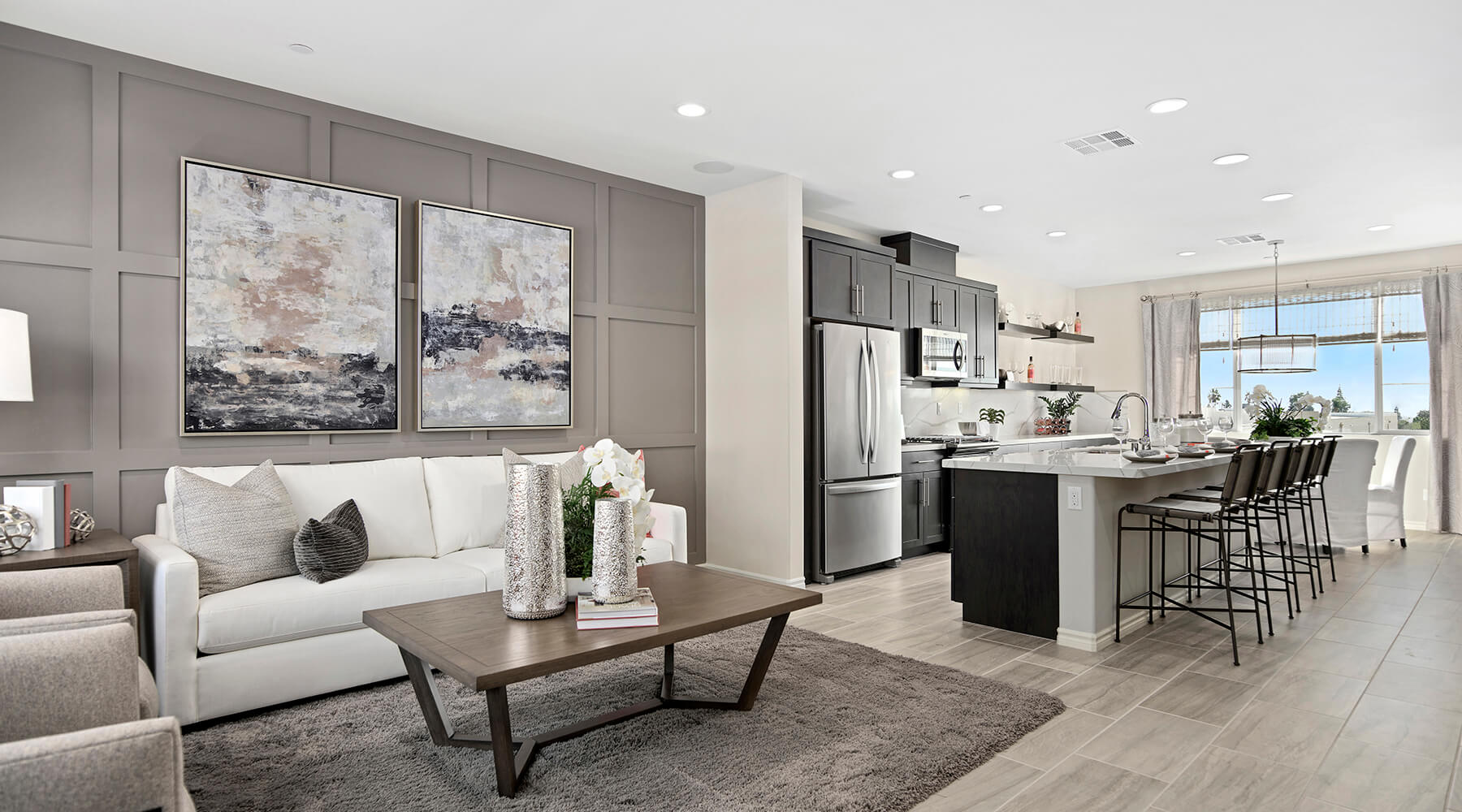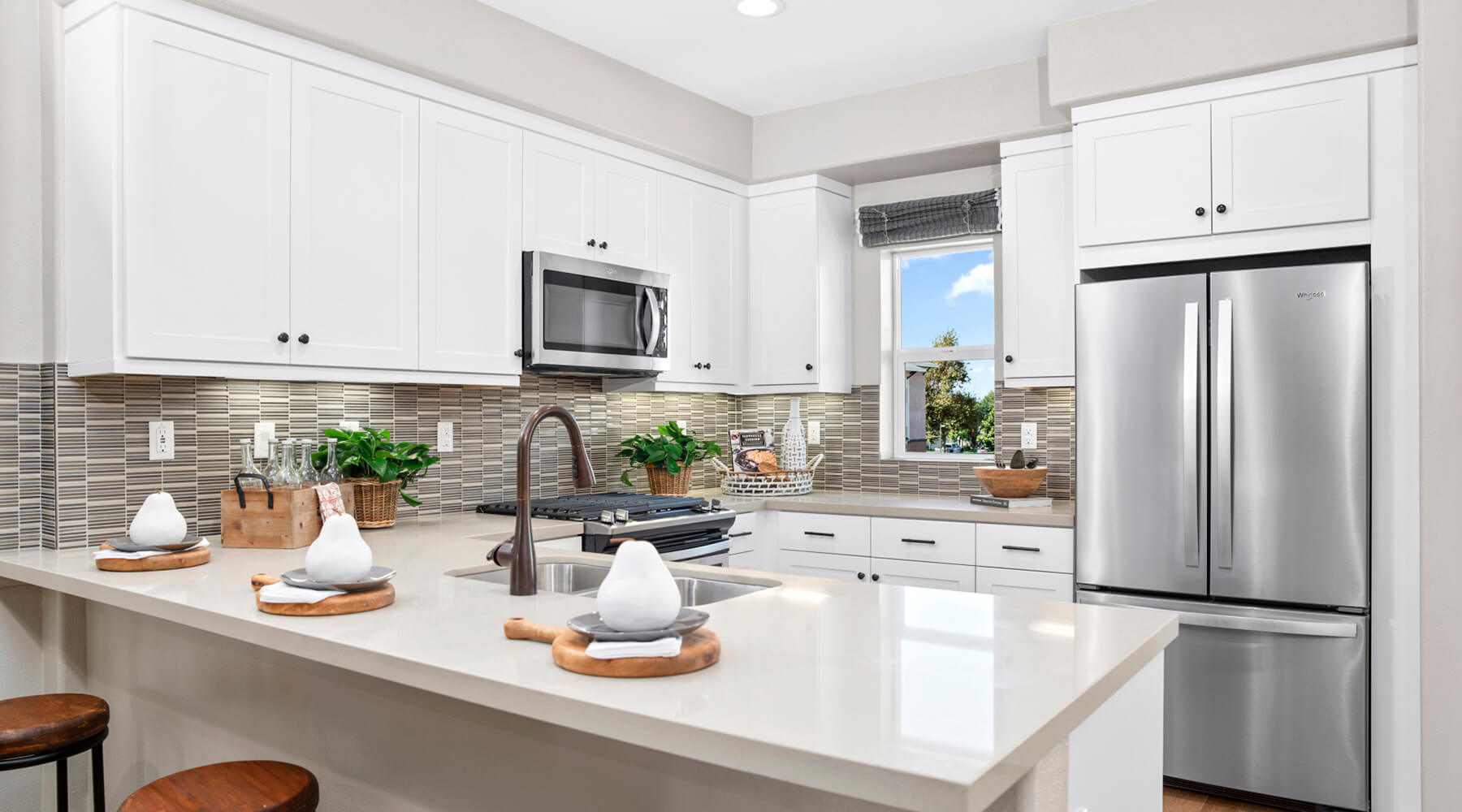Builder Magazine: “How U.S. Home Builders Can Attract Global Buyers”
Jan. 03, 2018
January 03, 2018
Six tips and tricks for understanding foreign buyer segments, meeting their needs, and ultimately making the sale
In 2007, California-based builder MBK Homes was building a community of three-story live/work townhomes in Gardena, Calif. When it came time to devise the project’s name and vision, Rick Fletcher, MBK vice president of operations, suggested the name “Four Gardens” after the four parks incorporated into the community plan.
Not long after, the builder’s market research found that the community had a high chance of attracting Asian buyers. MBK executives believed that this buyer type would respond well to communities designed in accordance with feng shui design principles and culturally auspicious numerical choices. The firm conducted weeks of research into feng shui and numerology in order to determine how to appeal to this group, and discovered that the number four signifies death in Chinese culture. “This [name] would have been a huge marketing flaw had we not understood our potential customers’ beliefs,” says Fletcher. “We went on to educate ourselves on what each number or combination of numbers means in the Chinese culture and arranged our street addresses to exclude the number four and lean toward numbers seven and eight, which are favorable and believed to represent good fortune.”
The company named the community after its street address, 1600 at Artesia Square, and went on to develop two other successful and well-received neighborhoods in the area, including 1500 Artesia Square next door. The number 1 signifies new beginnings in Chinese numerology, Fletcher says, while the number 5 represents resourcefulness and 6 represents calm.
Depending on where you build, you may also find that a certain portion of your buyer demographic is from outside the United States. They might be recent immigrants, prospective residents, vacation-home seekers, or overseas real estate investors. According to a recent National Association of Realtors (NAR) report, foreign buyers purchased more than 284,455 U.S. residential properties for a total dollar volume of $153 billion from April 2016 to March 2017. Florida properties account for 22% of residential purchases by foreign buyers, followed by California and Texas at 12% each. Taken together, these three states account for almost half of all foreign residential property purchases.
While it’s not surprising that builders on the coasts are welcoming international buyers, communities in the middle of the country have large populations of non-native residents as well, including Indianapolis; Columbus, Ohio; and Minneapolis. And as the middle class grows in countries such as China and India, more non-native buyers will enter the U.S. housing market.
In fact, for builders everywhere, the days of a homogeneous buyer pool are over, according to Michael Landers, founder and president of San Francisco-area consulting firm Culture Crossing. “Even in a place like the University of Iowa, the number of bubble tea restaurants outnumbers Starbucks three to one, due to the large influx of Asian students,” he said.
The NAR report backs this up. Chinese property buyers contributed the vast majority of the nation’s foreign residential purchase volume from 2016-2017 at $31.7 billion, or 14%. Buyers from Canada came in second at $19 billion, followed by the United Kingdom ($9.5 billion), Mexico ($9.3 billion) and India ($7.8 billion.) The study notes that the majority of Canadian and United Kingdom buyers are full-time residents of their home countries and do not intend to live in their U.S. properties, while the majority of Chinese, Indian, and Mexican home buyers are residents of the U.S. and plan to live in the homes they buy.
In this environment, American builders may run the risk of entering the design and marketing process with certain hard-wired cultural expectations for their buyers. They may find that they have a uniquely American idea of what a prospective buyer will prefer in their home, how they will behave in a meeting or model home tour, or about what will draw them into a sale.
At the same time, foreign home buyers have certain expectations about what a home should be, and the services and etiquette they expect to receive in a sales transaction. These expectations may not translate from one party to another if they are not shared or recognized—and may even cause strife if they’re not interpreted correctly.
A number of U.S.-based builders have successfully risen to these cultural challenges. They’ve taken advantage of multi-cultural consultants, market research, and one-on-one interaction to form a deep understanding of their customers, both American and foreign-born. Many of them have upward of 20% or even 50% shares of foreign nationals in their buyer base—and they’re well-equipped to keep those numbers high. Here are six strategies they use to welcome and sell to foreign buyers:
1. Accept Cultural Differences
One of the most common complaints that Landers hears from American sales staff is that foreign prospective home buyers often do not close the front door of a model home behind them when they enter. For a variety of reasons, he explains, some customers are not accustomed to closing the door when they enter a home, which an American salesperson may misinterpret as disrespect.
Landers refers to these types of situations as “culture crashes.” They occur when two sets of cultural intentions meet, but do not match. Often, one party or another may not realize that a culture crash is occurring. Instead, they judge the other party by the “benchmark” of their own cultural standards, and may jump to the conclusion that the other party is disrespecting them or being unhelpful, he says.
“When you’re intending to be something and people don’t see you the way you’re intending, we always put that on the other,” says Landers, whose firm specializes in consulting solutions for multicultural contexts and has counseled executives of multinational companies including Apple, Google, and Samsung. “So one of the things that we talk about in our workshops and in a lot of our consulting is, if people are pushing your buttons you need to be aware that they’re your buttons.”
In the case of the front door, Landers advises his home builder clients to give their customers a warm greeting as they enter, and to shut the door behind them. He points out that many non-American buyers will view a model home more as a real personal residence than as a sales office, and would prefer to be welcomed at the door.
2. Discover Your Demographic
Many home builders with large foreign buyer bases—including MBK Homes, whose buyers are 50% foreign—report that areas with an existing concentration of a certain foreign population will often attract more members of that population.
“Our communities in the Los Angeles South Bay Area are very attractive to a culturally diverse demographic,” says Fletcher. “In Gardena, our buyers are 90% Asian. In Anaheim, we attract over 90% Vietnamese customers; however, in the South County area of Orange County, our demographic mix is very different. When we built in Eastvale in the Inland Empire, our buyers were primarily Chinese foreign nationals and second generation who were buying with or for their parents.”
Before sales begin, builders should leverage market research to determine the relative demographic makeup of their prospective buyers. Recent migration data from sources such as the Census Bureau can offer insight into who’s buying and looking to buy in the area, as well as the types of homes that buyers are looking for. With this information in hand, builders can adjust their product, their strategy, or their thinking with an eye toward a likely buyer, whether that buyer is a foreign national or from a different part of the United States.
“We can see migration patterns in infill areas such as the San Gabriel Valley, the San Fernando Valley, and even parts of the Inland Empire,” says Tom Grable, division president at TRI Pointe Homes Southern California, whose buyers are 22% foreign nationals. “We can anticipate who that’s going to be and understand in advance who our likely buyer profile is. And then we design product and create features that are geared toward what that buyer profile is likely to either require or request.”
Click here to learn more about home design considerations for certain foreign buyer segments.
3. Understand Your Audience
Once you discover the cultural makeup of your buyers, the best way to learn how to sell to them is to learn more about their culture and its impact on how they think and interact with the world.
Some of the most common culture crashes stem from the disconnect between broad modes of thinking. For instance, according to Landers, native born U.S. residents and especially the American home building industry tend to be extremely task-oriented. This means that the American home buying process is very focused on accomplishing a task, with the end goal of selling a home to an individual or a couple. Home buyers from similarly task-oriented backgrounds will be familiar with this approach, but buyers from backgrounds that impart a relationship-oriented mode of problem solving may come away from the American home buying process frustrated, or even offended.
“People who are more relationship-oriented might feel that you’re not trustworthy because all you’re trying to do is get me through this task,” Landers says. “You don’t care about me, you don’t care about my family, you’re not spending time to talk and learn about me and my family, all your questions are about how you can sell the home to me, or tasks related to the home.”
Landers urges builders to personalize the home buying process, something that buyers of all backgrounds appreciate. “You need to see me as a person, understand my family, take some time there,” he says. “Those would be the things that I look at when we see more relationship-oriented cultures.”
While this website is meant to be used as a guidance tool, Landers cautions against the notion that a foreign buyer will behave in a certain way simply because they are from a certain country, or because they are from outside the United States. “Don’t assume just because someone’s coming from that country they’re going to do what the guide says. There are obviously lots of generalizations. But we recommend people being aware of something rather than nothing,” Landers says.
4. Speak Your Buyers’ Language
Knowing how to reach your prospective audience is the first and most important step toward grabbing its interest. Brandywine Homes and TRI Pointe Homes Southern California often spread the word about their housing developments to their core foreign demographics by advertising in publications in their native language. These include foreign-language print publications based in the U.S., such as the Chinese reader-oriented Epoch Times, or advertisements on foreign-language radio stations.
Some builders work with companies that serve as international contacts for overseas real estate brokers such as Coldwell Banker’s Global Luxury International service, according to Dave Barisic, principal in charge of sales and marketing at Brandywine Homes, which has 15% to 20% foreign buyers. “There are certain companies that will organize groups of people coming from, say, mainland China, bring them to Los Angeles, and drive them around to various communities so that they can look for investment properties,” Barisic says. “We’ve spoken with those companies but have not utilized any yet.”
When these advertising efforts lead to successful sales, they also grow one of the strongest sources of new foreign clients—word of mouth and direct referrals. Among respondents to the NAR survey, previous client contacts and referrals accounted for 47% of sales leads for residential foreign buyers, showing that keeping foreign buyers happy can reap exponential benefits going forward.
5. Assemble Knowledgeable Staff
Once you have the information you need about the buyers you intend to attract, you must make sure that your sales staff is properly trained to avoid the possibility of culture crashes.
Some problems can be caused with something as simple as the wrong facial expression. “A lot of salespeople get frustrated because they feel like their customers don’t trust them,” says Landers. “And that can be something as simple as the fact that the customer doesn’t smile a lot.”
When sales staff assume that a customer will smile if they are satisfied, they may feel confused or affronted if that indirect communication is not made. Some buyers come from a culture where direct, truthful communication is the most acceptable and comfortable, and the impact of a smile may not be as important. Others prefer indirect communication, which relies on the construction of relationships and nonverbal cues. Direct communicators may view indirect communicators as frustrating and tiresome, while indirect communicators may see direct communicators as harsh and aggressive.
This crash may lead to a breakdown in negotiations, Landers says. “[Different] negotiation styles cause Americans a lot of stress, because [foreign buyers’] negotiation styles might be more emotional, they might be more assertive, and the Americans might see those as aggressive.”
Other builders will seek out sales and marketing staff who are members of their group or have strong cultural connections to them. “[TRI Pointe’s] new-home advisers are very familiar with each submarket, they’re very familiar with each demographic, with their likes and dislikes, their needs relative to their values or customs,” says Grable. “So a lot of the training that goes on has been done over years of experience.”
MBK Homes continually works to broaden the horizons of a sales force that is already culturally diverse and multilingual. “We’ve attended cultural communication conferences, visited various temples and retail centers in Los Angeles, Little Saigon, and the San Gabriel Valley, and met with hundreds of brokers to better understand how different cultures conduct business and specifically the purchasing process,” says Rick Fletcher. “At any given time, our team is fluent in Mandarin, Korean, Farsi, Spanish, Tagalog, Japanese, and Thai. When your team can converse in your buyer’s native language, the cultural barriers come down.”
Another way to increase cultural awareness is through specialized cultural training from an expert. Landers expanded his cross-cultural consultancy into home building four years ago, and in that time has shared his expertise with TRI Pointe, M/I Homes, Lennar, CalAtlantic (then Ryland and Standard Pacific), and more.
6. Build the Best Home
In the end, whether your prospective buyer is from the other side of the world, the other side of the country, or the other side of the neighborhood, the end goal of a new-home sale remains the same—to match the buyer with a well-built home that meets their desires and expectations.
“All builders should be willing to understand the needs of every buyer,” says Barisic. “Whether it’s a foreign national buyer or a local move-down buyer, you need to understand what every buyer’s looking for, and advertise appropriately and staff appropriately.”
If you and your home buyer share a culture, anticipating these desires and expectations is an innate process. You likely share a similar definition of what a home should be, and expect some of the same home features and sales processes when you walk into a new-home sales center.
A buyer with a different set of expectations is still looking for what they consider the right home in which to live or invest, and meeting those expectations is as easy as adjusting the way you perceive the world. The best way to reach this buyer is to consider—and create—the living space and sales environment closest to their idea of home.
“Strive to achieve an expert understanding of your culturally diverse customers,” says Fletcher. “Build relationships within the relevant cultural communities and create trust. Always remember we have an obligation to build the right communities within our markets. The neighborhoods we create belong to our customers and their families, not us.”





